

The Master Switch


The Master Switch
A great pair of in-ear monitors (IEMs) can be a revelation. They can take your music to truly incredible places, far beyond what regular earbuds can do. And whether your budget is large or small, whether you’re after a pair of true wireless IEMS or a set of high-end monsters, there’s something for you on our list. For background information, see our in-ear monitor comparison table and buying advice below the picks. And if you’re looking to boost your portable audio game even further, see our articles on the best DAPs and headphone amps.
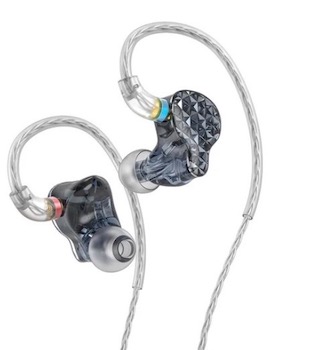 Driver Type: Balanced Armature
Driver Type: Balanced Armature
Impedance: 32Ω
Sensitivity: 113dB
What We Like: Super smooth and engaging sound quality.
What We Don’t: Filters don’t work quite as well as those found on other models.
FiiO are known for their excellent digital audio players, but less so for their IEMs. Perhaps that needs to change, because the FA9s are great fun to use. They have a particularly intriguing design element we haven’t seen on other models: a coiled internal tube that measures three inches in length, and which is (somehow) packed into the tiny housing. This tube alters the sound that passes through it, smoothing out the mids and highs. The result is an incredibly natural and engaging sound signature with a smoothness that we don’t think is beaten by any other IEM here.
We do have one small gripe with the FiiO FA9s. They have the same type of filter switches on the outside of the housing as you’d find on other higher-end models, but instead of two switches on each bud, the FA9s have three. This makes for a huge combination of filter options, including the ability to adjust the impedance and sensitivity slightly, but we find overall usability to be superior with fewer switches. That said, you’ll be hard-pressed to find better sound for the price, which is why the FiiO FA9s are our favorite IEMs of 2023.
See the FiiO FA9
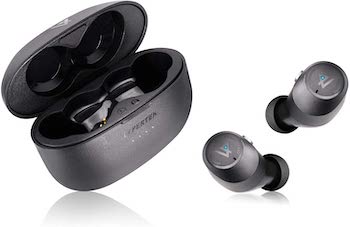 Driver Type: Dynamic
Driver Type: Dynamic
Impedance: Unavailable
Sensitivity: Unavailable
What We Like: For the money, the sound quality is terrific.
What We Don’t: Less battery life than their predecessors.
We did not expect to like the Lypertek Soundfree S20 IEMs as much as we did. But they redefined our expectations of how good a budget earbud can be, and if you want to spend under $100 and still get something great, they are ideal. The sound quality is realistic and natural, without compromising on bass heft. We think they easily beat more expensive models, like the Moondrop Starfield. And although the looks are nothing special, the charging case gets the job done, and we were genuinely surprised at how easy it was to get a good fit. The S20s are IPX5 water-rated and we’ve logged many hours in the gym with ours.
If there’s one downside to the Lypertek Soundfree S20s, it’s battery life. 48 hours total is very good, but the previous model - the Tevis - were even better, offering 60 hours between charges. That’s a little frustrating, but it’s still a very solid battery life. And while there is no noise cancelling like you find on the Bose or Sony IEMs, the S20s still have enough isolation to block out much of the world around you. As everyday, workhorse earbuds go, these are among the best we’ve tested. We continue to use ours on a daily basis.
See the Lypertek Soundfree S20
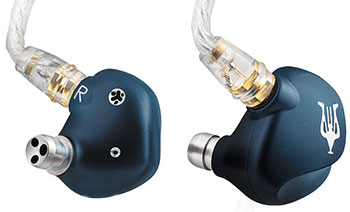 Driver Type: Hybrid
Driver Type: Hybrid
Impedance: 20Ω
Sensitivity: 110dB
What We Like: Unreal sound quality with stunning air and presence.
What We Don’t: They require careful pairing with your source.
Hybrid IEMs—which use a combination of driver types— are a relatively new development. While many companies have taken advantage of it, none have done it better than Romania’s Meze Audio. And their Rai Pentas are a stunning pair of IEMs. They go beyond what you’d expect from a regular hybrid, with additional elements like precisely calibrated tube bores which focus the sound. The audio quality here is sensational with an openness that stretches to the horizon. There are very few IEMs on this list that can compete with the Rai Pentas’ sound quality, including more expensive models like the 64 Audio U12t below.
That said, the Rai Pentas are not the most forgiving IEMs and that brilliant sound comes at a cost. Despite having a low impedance and relatively low sensitivity (in IEM terms), the Rai Pentas need very careful pairing with the source. A DAP or amp that is overly neutral simply won’t bring out the best in the sound quality (we strongly recommend starting with a tube amp, or a DAP that offers a little color). All in all, though, they remain an exceptional pair of IEMs and easily the best hybrid model we’ve heard to date.
See the Meze Audio Rai Penta
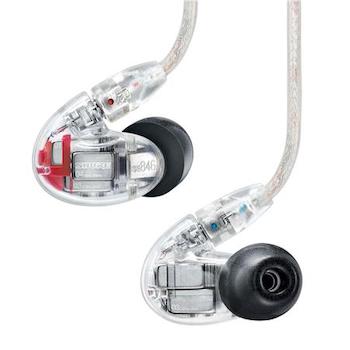 Driver Type: Balanced Armature
Driver Type: Balanced Armature
Impedance: 9Ω
Sensitivity: 114dB
What We Like: Some of the best sound you can get in an IEM for under $1,000.
What We Don’t: Poor cable, and the design resembles a medical device.
IEM comfort standards are pretty high these days, so it takes a lot for us to single out a particular model for a great fit. We think the Shure SE-846 are among the most comfortable IEMs available; we’ve worn them for hours at a time without any problems, which is not something we can say for models from the likes of Campfire Audio or AUDEZE. It also helps that they sound fantastic. The dynamics, in particular, really shine. Movie soundtracks through these IEMs are wonderful, and it helps that they can be comfortably worn for hours. Shure are a venerable company, and while the SE-846 are relatively old now—they were released in 2014—they remain a viable option.
Unfortunately, the Shure SE846s have some issues. The cable is finicky and prone to tangling, which is never a good sign from a high-end IEM. It must also be said that the looks are somewhat akin to a medical device, in our opinion. The SE-846s sound great, are super-comfy, and are well worth considering, but they are the definition of function over form. Of note: Shure offers a Bluetooth variant of these IEMs, but we don’t think they are very good and recommend that you stick with the wired version for now.
See the Shure SE-846
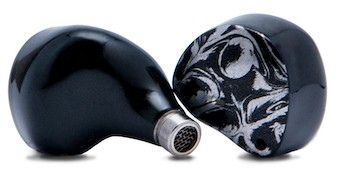 Driver Type: Hybrid
Driver Type: Hybrid
Impedance: Unavailable
Sensitivity: Unavailable
What We Like: One of the most luxurious sound signatures we’ve ever heard.
What We Don't: The lack of listed specs makes pairing a problem.
If you enjoy hybrid IEMs, you are going to love the Noble Audio Khan. It uses three different driver types— balanced armature, dynamic, and piezo electric—in a six-driver arrangement. The result is some of the most luxurious, effortless, and clean sound quality we’ve ever heard. If you demand the very best audio quality available, and if that is your overriding goal, then you absolutely have to hear the Khan. They are just magical.
These IEMs do have one particularly puzzling aspect, however. Noble Audio does not list the sensitivity or impedance of the Khan on their website, which is the only place they are sold. That’s bizarre: if you plan to spend this much on a pair of IEMs, you will almost certainly want to know these specs to assist you with pairing. While Noble do say that the Khan are “sensitive enough for use with most smartphones as well as portable amps and DAPs”, that’s just not quite good enough. And with their huge price tag, they definitely aren’t for everyone— most people will be entirely happy with the Meze Audio Rai Penta above, which cost over much less and are still brilliant. But if you demand the very best and don’t mind the lack of specs, the Khans are tough to beat.
See the Noble Audio Khan
 Driver Type: Dynamic
Driver Type: Dynamic
Impedance: Unavailable
Sensitivity: Unavailable
What We Like: Outstanding noise-canceling with helpful features.
What We Don't: Lacklustre sound, and the earbuds are quite big.
Although Bose were quite late to the true wireless earbud party, they came correct. The Bose QuietComfort II Earbuds offer some of the best noise-canceling we’ve ever tested. Not only is the base cancellation superbly engineered, blocking out the outside world effectively, but there are a score of useful features here. We particularly like the SideTone feature, which lets you hear your own voice on calls, so you can avoid raising it (something we’ve all done). That’s a feature that no other IEMs, including the amazing Sony WF-1000XM3, can boast.
Unfortunately, that’s the problem with the Bose QuietComfort II Earbuds. The Sony buds are amazing; the Bose are not. They are great at noise-canceling, but not so great at everything else. In terms of sound and ease-of-use, they fall to the aforementioned Sony buds, which are also significantly cheaper by over a hundred dollars. Our take: if cancellation is the most important thing, then the Bose QuietComfort Earbuds are the ones to go for. But they aren’t going to win any prizes for sound quality or design (they were among the largest earbuds we tested).
See the Bose QuietComfort Earbuds II
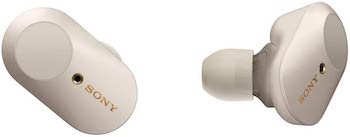 Driver Type: Dynamic
Driver Type: Dynamic
Impedance: Unavailable
Sensitivity: Unavailable
What We Like: Technological superiority mixed with outstanding sound quality.
What We Don’t: The imprecise controls can be difficult to manage.
Sony must be staffed by wizards. That’s the only explanation we have for the Sony WF-1000XM3, which have technology so good that it sometimes feels like magic. These are earbuds that let you mix noise-canceling and ambient sound, meaning you’ll get crystal clear audio without being blocked off from the world around you. They can sense when you are walking, running, or sitting, and adjust the sound accordingly. And the WF-1000XM3s cap it all off by sounding superb. While we think they are less charming and less affordable than the Cambridge Audio Melomania Touch IEMs, above, they make up for it with their technological superiority. And while you could argue that the cancellation on the Bose QuietComfort Earbuds is even better, those also significantly more expensive.
That’s not to say that the WF-1000XM3s are without fault. They are bulky and stick out from the ears, which can be a problem if you want something sleek and slim-check out the Cambridge buds, above, for a better option there. We also had issues with the touch controls, which felt imprecise and floaty. That’s another area where the WF-1000XM3s are beaten by the Lyperteks and the the Cambridge Audio buds. But neither of those earbuds can compete with the WF-1000XM3s’ sound, noise-canceling, and solid wireless performance...Read our in-depth review
See the Sony WF-1000XM3
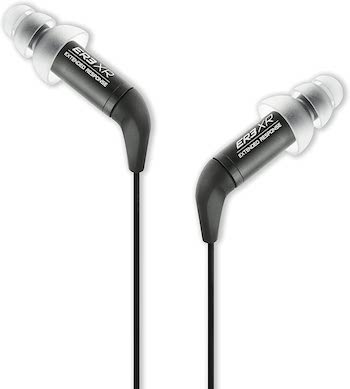 Driver Type: Balanced Armature
Driver Type: Balanced Armature
Impedance: 22Ω
Sensitivity: 102dB
What We Like: Outstanding isolation make these IEMs ideal for blocking out the outside world.
What We Don’t: Harsh highs and some comfort issues.
Noise-canceling tech can often adversely affect the sound of your IEMs. If you don’t want to disrupt that, another option is to go for a pair that offer excellent passive isolation, sealing off the ear canal. No IEM does that better than the Etymotic Research ER3XR. The precisely designed tips completely fill the ear canal, not only blocking out the outside world but delivering truly impressive audio. The mids in particular really shine, and we think they give more expensive IEMs a run for their money. If you want a pair of relatively inexpensive IEMs that offer outstanding quality and isolation, the ER3XRs should be one of your top choices.
There are downsides to that perfect fit, however. Wearing these for hours at a time may prove uncomfortable— earache starts to become an issue, as well as an uncomfortable sense of pressure. And as good as the sound quality is, the highs can get harsh and fatiguing over long periods. Etymotic Research do offer two variations of this model that may compensate for this: the Studio Edition offers a more neutral and balanced sound, while the Extended Response has a small bass boost.
See the Etymotic Research ER3XR
 Driver Type: Dynamic
Driver Type: Dynamic
Impedance: 32Ω
Sensitivity: 122dB
What We Like: Gorgeous looks, beautifully sweet sound.
What We Don't: Poor soundstage stops these from being a top contender.
If you’re looking for a traditional IEM at a good price, you should consider the Moondrop Starfield. It has several things going for it, including some of the best looks of any earbud we’ve ever seen. Starfield is right! It also helps that the sound is beautifully sweet. The Starfield uses a Super Aligned Carbon Nanotube Array, a type of technology that results in an ultra stiff diaphragm. This means you get extended treble response and scintillating detail. There’s an argument that these are the single best-sounding IEMs in this price range.
It’s not all gravy though. As good as the treble and detail are, we did find that the soundstage was poor. It felt two-dimensional and lifeless, rather than expansive. It’s a frustrating problem to have, and it does mean that as much as we like the Starfield, it’s not a top choice. If you’d like something a little bit more neutral, check out the Cambridge Audio buds, above.
See the Moondrop Starfield
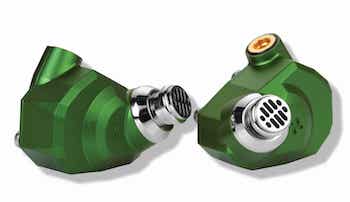 Driver Type: Balanced Armature
Driver Type: Balanced Armature
Impedance: 15Ω
Sensitivity: 94dB
What We Like: Easy-to-drive, beautiful sound, iconic design.
What We Don’t: The Andromedas need a good seal to perform well.
The Campfire Audio Supermoon have become a firm favorite in the audiophile world. This Portland-based company is a innovator: the housing printed as a single unit with no seams or joining, which they say results in lower resonance. It’s a subtle change, but a good one, and Supermoon remain at the same price point as previous top-end models. They also are easy-to-drive with a friendly impedance of 15.5Ω. While we always recommend a separate headphone amp if you can, you will have no problems driving these with a smartphone, and that’s a rarity in this price range.
The competition has become fiercer since the green monster debuted. For example, IEMs like the Meze Audio Rai Penta offer better sound for an identical price. And unfortunately, Campfire have not fixed one of the biggest issues of the Supermoon, which is the awkward fit. These IEMs require a solid seal in the ear to perform at their best, and this can often mean they are uncomfortable to wear for long periods. We hope that future updates fix this while still retaining the iconic design—and that fabulous green color.
See the Campfire Audio Supermoon
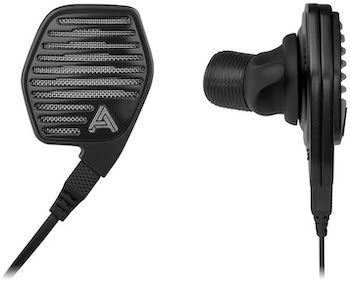 Driver Type: Planar Magnetic
Driver Type: Planar Magnetic
Impedance: 20Ω
Sensitivity: 110dB
What We Like: These IEMs can operate in both wired and wireless mode, with stunning planar sound.
What We Don’t: No USB-C charging and the open-back design leaks sound.
Planar magnetic drivers are usually only found in full-size headphones, but AUDEZE are one of the few companies who have managed to translate them into earbud form with the LCDi3. These remarkable IEMs are not only fully planar magnetic, with a typical open and airy sound structure, but have a unique feature that no other models on this list have. While they can operate in traditional wired mode, AUDEZE also offer a Bluetooth module in the package. That’s something that more expensive IEMs, like the more expensive Campfire Audio Andromeda 2020 above, don’t have.
There are two big downsides to the Audeze LCDi3. First, they have an open-back design, which means a grill on the outside of the earbuds’ housing allows the air to interact with the drivers. This boosts the sound quality, but at the expense of leaking music like crazy. Anybody around you will be able to hear what you are listening to, meaning the LCDi3s’ utility as a pair of wireless buds is limited (we can’t see you taking these on public transport). Second is the lack of USB-C charging on the Bluetooth module, meaning that you may want to think hard before you pick up a pair of these. All in all, they sound terrific but are far from perfect.
See the AUDEZE LCDi3
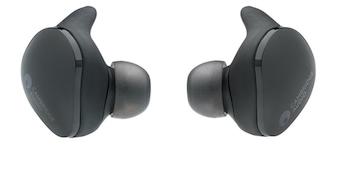 Driver Type: Dynamic
Driver Type: Dynamic
Impedance: Unavailable
Sensitivity: Unavailable
What We Like: Gorgeous design matched with killer sound and one of the best apps we’ve tested.
What We Don’t: Occasional Bluetooth pairing issues, no noise-canceling.
In the world of IEMs, Cambridge Audio are a true David squaring up against the twin Goliaths of Sony and Bose. But we think the Melomania Touch true wireless buds are arguably the best you can buy. For less than $100, you get a sleek, elegant pair of IEMs with detailed and warm sound quality, and quality-of-life features that make them a joy to use. The companion app, for example, is stellar, easily matching up to that offered by Sony. The Melomania Touch also beat the Sony and Bose buds, below, on battery life, delivering nearly two days worth of charge. In short, there’s a ton to recommend here.
One downside with the Cambridge Audio Melomania Touch buds is the lack of noise-canceling. While that’s clearly a deliberate design choice, it means that anyone looking to completely block out the outside world is best going for the Bose QuietComfort Earbuds or the Sony WF-1000XM3s. In addition, the Melomania Touch buds do have an annoying Bluetooth pairing procedure, and occasional fiddly controls. That said, in our opinion there is simply no other pair of true wireless IEMs that is quite as rewarding. We loved our time with the Melomania Touch, and they are easy top three choice…Read our in-depth review
See the Cambridge Audio Melomania Touch
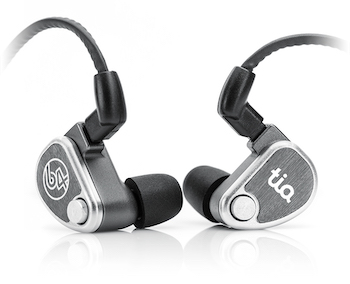 Driver Type: Balanced Armature
Driver Type: Balanced Armature
Impedance: 12.6Ω
Sensitivity: 108dB
What We Like: Hugely detailed sound quality, especially in the mids.
What We Don’t: The included cable is poorly made and not worthy of the price tag.
The 64 Audio U12t are the IEMs you buy if you crave detail. If you want to hear every single thing going on in the track, from the vocalist’s lips parting to the sound of the guitarist’s fingers coming off the strings, these are your only option. They are impeccably made, packing a massive 12 balanced armature drivers into their robust housing. While the balanced, neutral approach won’t please everyone, these IEMs are very clearly worthy of their high price tag. And that price may turn some people off, so if you are looking for a more affordable option which still delivers balanced sound, try the Campfire Audio Andromeda 2020 above.
We do have to say that we were unimpressed with the quality of the included cable. A $2,000 pair of IEMs should not have a cable that feels as cheap as this one does. While there are several excellent third-party cables available to buy, it’s frustrating to have to do that when spending this amount of money. If you can live with it, however, you’ll find that the U12t IEMs are a hugely satisfying pair of IEMs.
See the 64 Audio U12t
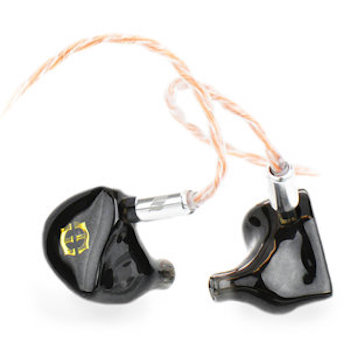 Driver Type: Hybrid
Driver Type: Hybrid
Impedance: 14Ω
Sensitivity: 102dB
What We Like: Incredible technology that produces sound with beautiful timbre.
What We Don’t: The bass occasionally feels overcooked.
In the IEM technological arms race, few companies are further ahead than Empire Ears. Their Legend X series offers an almost embarrassing amount of proprietary tech. You get seven drivers, a ten-way crossover network, and ferromagnetic liquid compartments to dampen vibrations. The result is beautiful sound quality with stunning warmth and an engaging timbre. While we still prefer the 64 Audio U12t overall, but the Legend Xs are absolutely worth considering.
One thing to bear in mind is that the identically priced Jerry Harvey Audio Roxanne has much better bass. While the low-end here is excellent, it can occasionally overwhelm the rest of the sound. It’s as if Empire Ears are trying a little too hard— as if they got a little too excited about all that technology. The result is that the Legend Xs probably aren’t the first choice for those looking to spend over $2,000 on a pair of IEMs.
See the Empire Ears Legend X
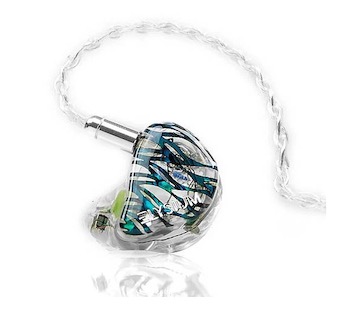 Driver Type: Dynamic
Driver Type: Dynamic
Impedance: Unavailable
Sensitivity: Unavailable
What We Like: Incredible mid-range sound.
What We Don't: Lightweight bass, occasional harshness.
Let’s say you like the idea of custom IEMs, but you don’t want to go through the hassle of taking your impressions. In that case, the Vision Ears Elysium is for you. Although it is a universal IEM, it allows full customization of artwork, accessories, and more. It’s a good halfway solution, and if you want to spend a few thousand dollars on an IEM that looks exactly the way you want, it’s the way to go. It helps that the sound is solid, particularly the mid-range, which is sweet and natural.
Unfortunately, there are some major downsides to the Vision Ears Elysium. As good as the mid-range is, we felt that the bass was a little lightweight, without the power and punch that we’ve come to expect in this price range. We also found that the sound could occasionally edge into the harsh, especially on overly sibilant elements. These are good IEMs, and we think there are better options from Jerry Harvey, 64 Audio, and Empire Ears.
See the Vision Ears Elysium
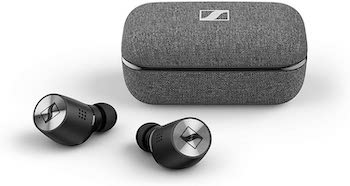 Driver Type: Dynamic
Driver Type: Dynamic
Impedance: Unavailable
Sensitivity: Unavailable
What We Like: The best-sounding true wireless IEMS available right now.
What We Don’t: These IEMs are hellishly expensive.
The original Sennheiser Momentum True Wireless were a disaster. They sounded great but were hamstrung by poor battery life and some of the worst controls we’ve ever tested. The Sennheiser Momentum True Wireless 2s, fortunately, take care of these issues. The battery life has been improved to 35 hours from a paltry 11, and the controls are much improved. Even more importantly, the excellent sound remains. In the world of true wireless IEMs, these are unquestionably the ones that sound the best.
Our biggest issue with the Sennheiser is that they expensive for what you get. Yes, they sound great, but the Sony WF-1000XM3 above sound almost as good at a similar price point. In addition, the Sony IEMs have better battery life, a wider range of app features, and vastly simpler controls. The Sennheiser Momentum True Wireless 2 are a significant improvement on the original and absolutely worth investigating if you want a pair of true wireless buds, but they struggle against the hefty competition.
See the Sennheiser Momentum True Wireless 2
| IEM | Price | Driver | Imp.** | Sens.*** | Cables | Freq.**** |
|---|---|---|---|---|---|---|
| FiiO FA9 | $450 | Bal. Arm. | 32Ω | 113dB | Removable | 15Hz-40kHz |
| Lypertek Soundfree S20 | $49 | Dynamic | Unavailable | Unavailable | N/A | 20Hz-20kHz |
| Meze Audio Rai Penta | $1,099 | Hybrid | 20Ω | 110dB | Removable | 4Hz-45kHz |
| Shure SE-846 | $899 | Hybrid | 9Ω | 114dB | Removable | 15Hz-20kHz |
| Noble Audio Khan | $2,399 | Hybrid | Unavailable | Unavailable | Removable | Unavailable |
| Bose QuietComfort II | $199 | Dynamic | Unavailable | Unavailable | N/A | Unavailable |
| Sony WF-1000XM3 | $100 | Dynamic | Unavailable | Unavailable | N/A | 20Hz-20kHz |
| Etymotic ER3XR | $98 | Bal. Arm. | 22Ω | 102dB | Removable | 20Hz-16kHz |
| Moondrop Starfield | $110 | Dynamic | 32Ω | 122dB | Removable | 10Hz-36kHz |
| Campfire Supermoon | $1,099 | Bal. Arm. | 15Ω | 94dB | Removable | 5Hz-20kHz |
| AUDEZE LCDi3 | $899 | Planar | 20Ω | 110dB | Removable | 10Hz-50kHz |
| Cambbridge Melomania Touch | $80 | Dynamic | Unavailable | Unavailable | N/A | 20Hz-20kHz |
| 64 Audio U12t | $1,999 | Bal. Arm. | 12.6Ω | 108dB | Removable | 10Hz-20kHz |
| Empire Ears Legend X | $2,299 | Hybrid | 14Ω | 102dB | Removable | 5Hz-40kHz |
| Vision Ears Elysium | $2,500 | Dynamic | Unavailable | Unavailable | Removable | Unavailable |
| Sennheiser Momentum TW 2 | $125 | Dynamic | Unavailable | Unavailable | N/A | 5Hz-21kHz |
*Bal. Arm. = Balanced Armature driver type
**Imp. = Impedance
***Sens. = Sensitivity
****Freq. = Frequency Range
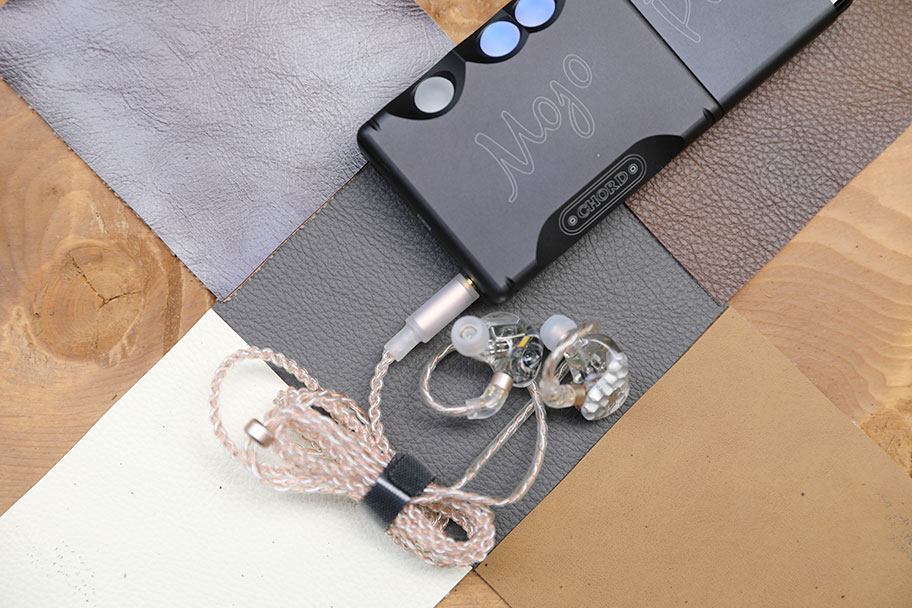
You might very well ask what the differences are between In-Ear Monitors (IEMs) and earbuds. If they both describe audio devices that sit inside the ear, then why are there two different terms? It all lies in where exactly the device sits. As you can probably tell from the name, an in-ear monitor is designed to sit inside the actual ear canal. It’s a device that has to be inserted, and which typically has smaller and higher-quality drivers to create the sound. An earbud, however, is designed to rest on the outside of the ear within the fleshy folds known as the antitragus and concha—the outer parts of the ear you can feel with your fingers.
If you’ve been through our list already, you’re probably thinking: there’s a mix of both IEMs and earbuds on this list, so why does this article classify them all as IEMs? The answer to that is a little bit complicated. In the world of audio, IEM has become shorthand for a device that prioritizes sound quality over other features, and that has grown to encompass both traditional IEMs and earbuds. We made the choice to include both types here. There are examples of each type that have superlative sound quality, and we wanted to be more inclusive, rather than less.
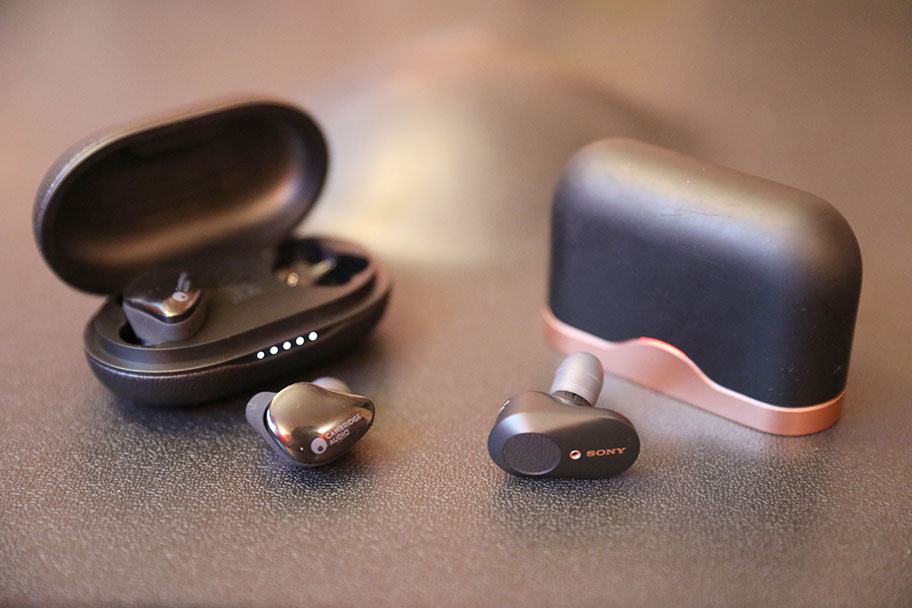
If you’re looking at investing in a pair of IEMs, chances are that you’re concerned about sound quality and extracting the very best you can. Given the prices of some of the models on this list, which can be upwards of four figures, you’d expect that higher prices guarantee better sound quality. But is that strictly the case?
There is certainly some truth to it, but only up to a point. Up to around $1,000, it’s broadly true that you will get more realistic and more enjoyable sound quality the more money you spend. But after that point, things tend to level off. Let’s use the examples of the $1,099 Meze Audio Rai Penta, and the $2,299 Jerry Harvey Audio Roxanne. You would assume that the Jerry Harvey IEMs sound significantly better than the Mezes, but that’s not true—they just sound different. The Rai Pentas offer outstanding air and clarity, and in our opinion, have some of the most entrancing detail of any IEMs we’ve ever heard. The Roxanne Aion Series, on the other hand, trade off that detail for wonderful and rich bass and are significantly more powerful than that which you’d find on the Rai Pentas.
When you decide to buy a pair of IEMs, think carefully about the kind of sound you enjoy. It’s all very well splashing out on an expensive pair, but there might be a more affordable option that offers something that suits your tastes a little better. And remember: less-expensive models may lose out on sound quality, but they will also come with a wealth of features that more expensive IEMs may not have. The Rai Penta and Roxanne Aion Series sound fantastic, but they do not have the convenience or the noise-canceling of the Sony WF-1000XM3 (full review here)
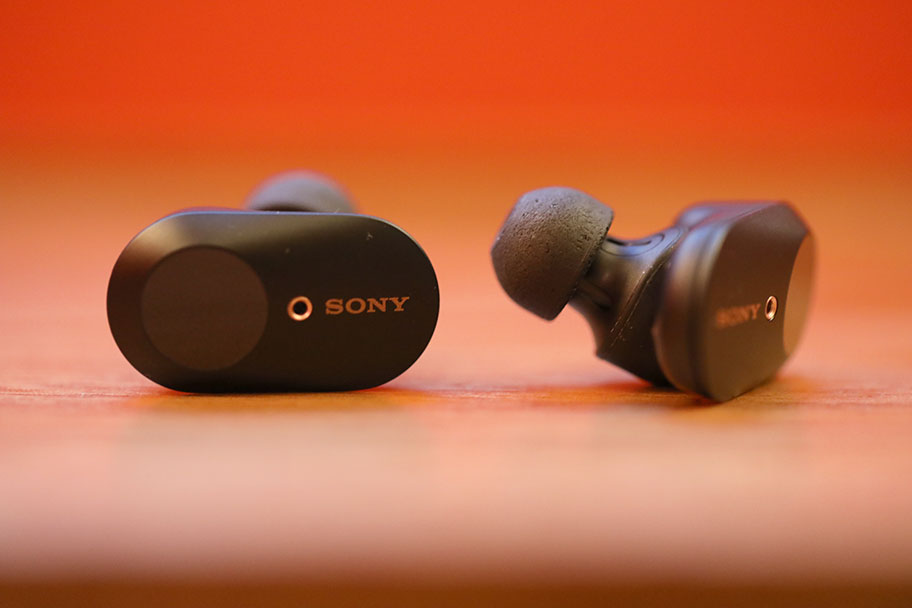
Next to sound quality, fit and comfort are probably the most important aspects of choosing an IEM. Think of it like choosing a pair of running shoes. It’s not just about finding a pair that feels comfortable in the store, it’s about finding a pair that will feel comfortable miles down the track, and one that won’t get in the way of your running. With IEMs, you want a model that will allow you to wear it comfortably for hours at a time, without making your ears ache. Fit actually has a direct correlation to sound quality, as well. The more secure the fit, the better the IEM will isolate, or block out the outside world. The key is in getting a snug fit that is still comfortable for long periods.
The problem is, ears are unique. There’s an adage among police sketch artists that if they can get an accurate picture of a suspect’s ears, the rest will follow. This applies to the inside of the ear as well, and it means there is no hard and fast set of rules regarding fit and comfort, no grading system you can rely on. But that doesn’t mean you have to go into this blind.
The first thing to look at is the materials that a pair of IEMs is made out of. Broadly speaking, heavyweight materials like metal tend to be less comfortable than plastic. While there are good acoustic reasons for choosing metal, it can often cause issues with comfort in the long term. If you’re after something softer, you may want to consider a pair made out of either plastic or a lighter metal. Something like the $1,099 Meze Audio Rai Penta, which are made out of lightweight milled aluminum, may be a better option.
The actual style of IEM is also important. It is a traditional IEM that sits directly in the ear canal? Is it a bud but you simply pop into the ear? Or is it an earbud that sits on the outside of the ear? IEMs that sit right in the ear canal will give you better sound, but may be uncomfortable over long periods. An earbud that rests on the outer ear can be comfortably worn for hours.
The final aspect to pay attention to is the sound itself. If the audio is tinny or the stereo image doesn’t sound as good as you’d expect to, then you may be dealing with a pair of IEMs that don’t fit especially well. Admittedly, you can’t change the structure of the IEM itself, but what you can do is change the tip size or type. This is such an in-depth topic that we have a separate section for it below, which is worth checking out if you want to get the best possible fit.

We’ve already talked about the importance of fit, and how isolation and build materials can have a real impact. But we haven’t yet touched on what is perhaps the most important part of the whole process: the ear tip. This is the soft tip at the end of the IEM, and ensuring you have the right size is absolutely crucial to getting a good fit. Virtually every IEM available will ship with multiple tip sizes, and the one thing you absolutely have to do when you unpack your new purchase is to experiment, and see which size is best for you. Be aware that you may need to use a different size on each ear. You are looking for a fit that is snug, but not uncomfortable, and which won’t come out with any vigorous head movements.
There are three main materials to choose from: silicon, foam, and rubber. We would not recommend using rubber tips as they tend to be hard and uncomfortable. Silicon tips are soft, flexible, and easy to clean. They tend to have less isolation than other tips, and aren’t comfortable with sweat, so may not be ideal if you plan on exercising. Foam tips, on the other hand, are arguably the most comfortable option and excel at creating a good seal. The downside is that they can often affect the sound quality by increasing the impression of bass. Generally speaking, IEMs always come with a range of silicon tips and may include foam tips as well. If they don’t, you can easily purchase your own, such as these Comply memory foam eartips.
If you go for a silicon tip, the next thing to pay attention to are the flanges. A flange is a projecting circular rib that juts out from the body of the tip. A tip may have one or more flanges and they are designed to aid isolation and fit. The number of flanges you go for is entirely a personal choice and dependent on what the inside of your ears look like. The number of flanges is a less important choice than the type of material, so don’t fret too much about this particular element of IEMs.
Since we’ve talked about how important comfort is, it’s worth discussing the best way to insert an IEM. You can’t just jam it in the ear. First, if you have a foam tip, you’ll need to roll and squash it in your fingers until it is as thin as possible. If your tip is silicon, you can jump straight to the next step. Grab the top of your ear, and pull it up and back, flattening it alongside your head. Insert the IEM and wait for around 20 seconds before letting go. If you have a pair of true wireless IEMs, however, like the Sennheiser Momentum True Wireless 2, you can skip the ear tugging—all you need to do is insert the bud with a slight screwing motion. It should slide in naturally.
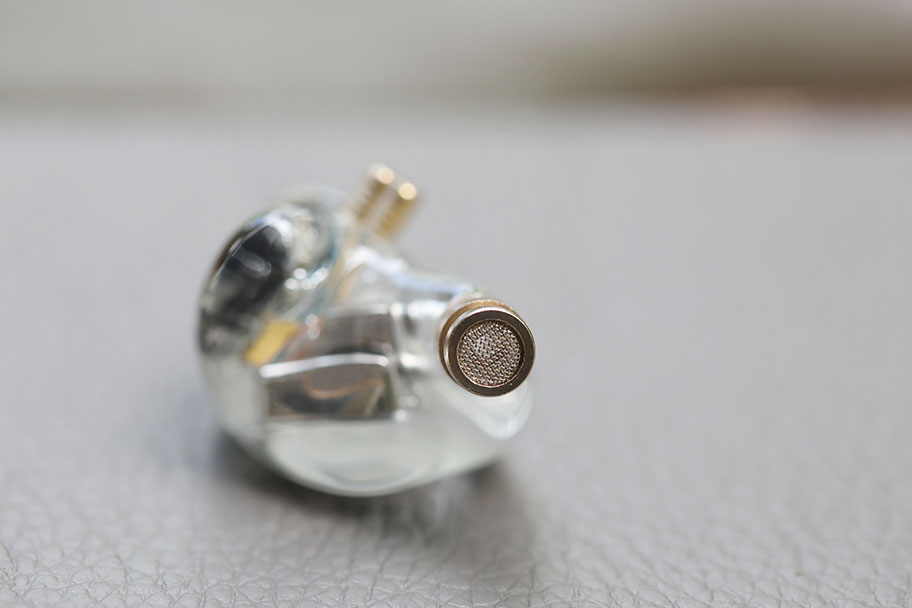
When you’re choosing a pair of IEMs, it’s worth knowing a little bit about the types of drivers contained inside them. Different driver types have different impacts on the sound quality, so let’s break down the ones you’ll find.
Dynamic drivers are easily the most common driver type and consist of a simple diaphragm that moves in response to an electrical signal, creating the sound. Dynamic drivers are cheap to produce, and found in almost all IEMs below about $500. This does not mean they are of poor quality, as anybody who has heard the $70 Lypertek Soundfree S20 can attest to. Dynamic drivers tend to offer a good all-around sound that is relatively balanced and clean, but which may not have the subtlety and dynamism of other driver types. And because they rely on air movement to create their sound, earbuds that use them tend to have worse isolation than other models which can have an impact on the sound quality.
Balanced armatures consist of a coil suspended between two magnets. The coil is moved by the magnets thousands of times every second, which in turn moves a diaphragm to create the sound. Because there is limited air movement, IEMs with balanced armatures tend to have excellent isolation. Balanced armatures are often tuned to one specific area of the frequency spectrum, so it’s common for IEMs that use them to have multiple armatures inside the housing. What this means is that each armature can be tuned for a specific part of the frequency spectrum, which means better overall sound— and in particular, better treble, a hallmark of this driver type. They do tend to be a little more expensive than IEMs that use dynamic drivers. Go for this driver type if you want something a more nuanced and effective than a basic dynamic driver, but don’t mind spending a little money.
This driver type is by far the least common one you’ll see in the world of IEMs. Only one pair of IEMs on our list actually uses it: the $899 AUDEZE LCDi3. Planars are typically used in full-size headphones and are exceptionally difficult to miniaturize—AUDEZE are one of the few companies to have attempted it. Planar drivers spread a magnetic current directly across the diaphragm, resulting in sound that is airy and wide. Models that use them tend to be relatively expensive, although not quite as much as models that use multiple balanced armatures.
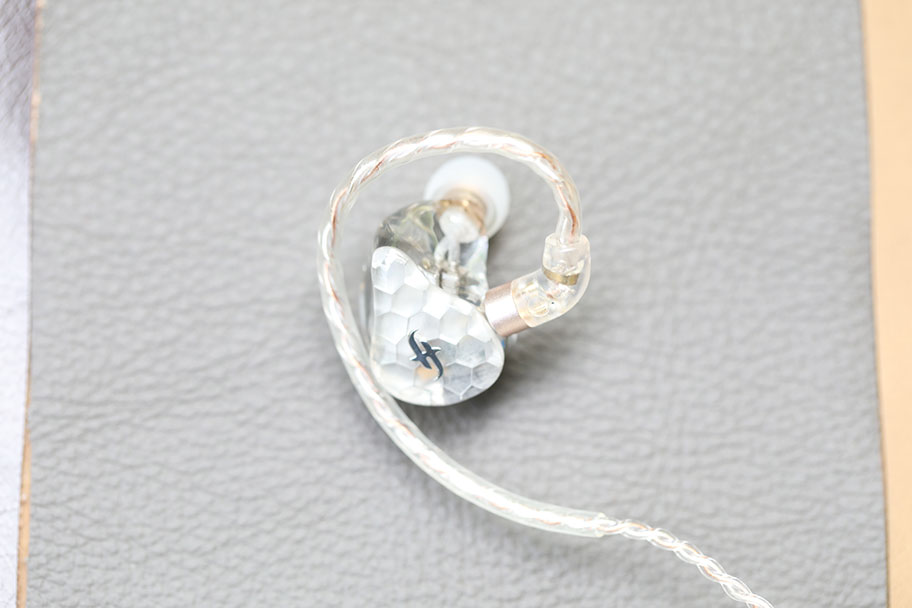
In our section on driver types above, we list three main categories of drivers: dynamic, balanced armature, and planar magnetic. Each has their own pros and cons, so for some time now, savvy manufacturers have been combining them. These are known as hybrid IEMs and they contain different types of drivers. If you’re looking to get the absolute best sound you can, then it’s worth investigating a hybrid IEM.
Right now, we think the best hybrid IEM available is the $1,099 Meze Audio Rai Penta. The Rai Pentas use four balanced armature drivers paired with a single dynamic driver. In this way, they benefit from the power and energy of the dynamic driver, coupled with the multifrequency tuning and treble clarity from the balanced armatures. This kind of hybrid design is expensive to manufacture, as it requires careful tuning and research to get right. You can’t just shove a bunch of different drivers into a housing and call it good. That means you are unlikely to find hybrid IEMs for under $1,000, but if you’re looking for the best of all worlds in terms of sound quality, a hybrid IEM is the way to go.
Impedance refers to electrical resistance, and is probably one of the most important specs to be aware of when buying an IEM. It’s measured in ohms (Ω), and at its simplest, it tells you how much power an IEM requires to be driven to a decently audible volume. Anything with an impedance up to 32Ω can safely be connected to a smartphone. Impedance from 32Ω to 100Ω is something of a grey area— a smart phone may be able to power them, but you’d be better off with a dedicated headphone amp. Anything above 100Ω will definitely require external power. With one or two exceptions, all the IEMs on our list are below 32Ω. That’s good news, as it means they can be effectively driven from your smartphone. Keep in mind that impedance isn’t set in stone and tends to fluctuate depending on how much current is being delivered at any given time, although for simplicity, manufacturers often give a single impedance figure.
You might reasonably ask why it’s worth going for a pair of IEMs with higher impedance. If the goal is ease of power, then surely it is best to get a pair with the lowest impedance possible? The thing is, this is far more of an issue with full-size headphones that can often have impedances of up to 600Ω. With low-impedance IEMs, knowing the impedance is useful for what is known as impedance matching. This means you can essentially harmonize with your source device to get the best sound possible. It sounds complicated, but it’s actually very easy: all you have to do is make sure that the impedance of your IEMs is at least eight times the output impedance of your amplifier, digital audio player, or smartphone. So the $450 FiiO FA9, with an impedance of 32Ω, would be best matched with an amplifier that has an output of 4Ω. It doesn’t have to be exactly eight times the power, and we can assure you that nothing bad will happen if the match isn’t exact. But if you want to extract the very best from your new IEMs, it’s worth trying your best.
Sensitivity is a measure of loudness at a given power level. It essentially says: if you put a set amount of power through these IEMs (usually one miliwatt) how many decibels (dB) will they produce? Because of their small size and tiny drivers, IEMs are often able to get extremely loud. That sounds like a good thing, but it can be a problem. Not only can it cause trouble if you happen to have the volume turned up too high, but it can also expose the deficiencies of your source.
Here’s what we mean. Let’s say you own a pair of Jerry Harvey Roxanne— lucky you, because they cost over $2,000 and sound superb. They have a sensitivity of 119dB, which is enormous. That means they don’t require much power to get very loud. What that means is that even at low volumes, you’ll be able to hear not only the music, but also any electrical noise or imperfections in the source’s electronics. You’ll be hearing hiss, crackling, or even an unpleasant buzzing. High sensitivity IEMs can offer fantastic dynamic range, which is especially good on movie soundtracks and classical music, but they do need to be paired with a good amplifier to minimize the noise.
For what it’s worth, most portable digital audio players are specifically designed to handle IEMs of almost all sensitivities, so if you do plan on buying a powerful IEM, it may be worth looking into one of these. In addition to that, sensitivity measurements are not standardized in the audio industry, so not all manufacturers use the same testing methods. Take all sensitivity measurements with a grain of salt.
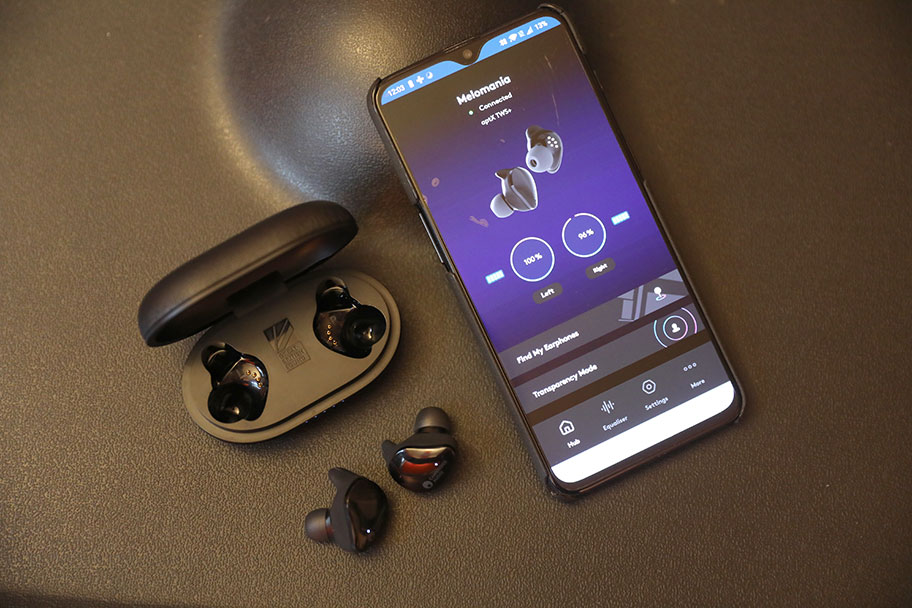
There are very clear differences between wired and wireless IEMs. The first is that wireless models are obviously far more convenient. They don’t require external amplification, they can be taken anywhere, and most importantly, there are no cables at all. Every wireless IEM on our list is a true wireless type, which means the buds are not connected by any wires. All you need to do is slip them in, connect them to your source device (like a smartphone or a digital audio player) via Bluetooth, and you’re good to go.
The second difference is in sound quality. Wireless lovers will absolutely insist that Bluetooth audio has taken huge strides over the past few years—and they’re right. But despite the appearance of advanced Bluetooth software like aptX and aptX HD, wireless audio still has a way to go before it reaches the heights of high-end wired IEMs. The physical cables those IEMs have are usually made from a high-quality material like copper or silver, allowing a more accurate signal to be transmitted. The audio quality there is almost always better than regular wireless IEMs. Even a good wireless model like the Sennheiser Momentum True Wireless 2 don’t sound as good as other wired models in the same price range. The bottom line is, if convenience is important to you, then a true wireless model is absolutely the way to go. But if sound quality is your primary consideration, you may want to cast a wider net.

If you’re going for a pair of wired IEMs, it’s worth thinking about the cable. We aren’t just talking about whether or not it tangles. The type of cable and its connector can have a huge impact on the sound quality and your overall comfort. If the cable is removable, it means you can replace it with a cable from a third-party manufacturer like Kimber Kable, a company that specifically focuses on developing high-quality cables with materials that benefit the sound. High-end IEMs tend to have excellent cables, but if you aren’t satisfied with the one you have, being able to remove the cable and swap it out for another one can be a real advantage.
More importantly, it’s worth noting the type of cable connector on your IEMs. The connector itself doesn’t have a huge impact on the sound quality, but it can make a real difference to your comfort. The two most common connections you’ll find are two-pin and MMCX. We always recommend going for the latter if possible, for the simple reason that they use a single-pin design that can rotate freely. That means there is no correct way to position the cable, which means you have more flexibility and versatility while wearing the IEMs. This is especially important if you have cables that are designed to fit over the top of the ear
Getting a good fit is such an important consideration with IEMs that some manufacturers take it a step further. If you have the funds, they will create a pair that is custom fitted to your ear canal—a CIEM, or Custom In-Ear Monitor. They do this by taking highly accurate measurements, using both digital devices and old-school physical techniques like creating a mold from sterile putty. While the best way to do this is in person, it’s often not practical, as manufacturers may be in different cities to you. Some companies like Ultimate Ears offer a hugely flexible service that will allow you to upload measurements taken by third-party professional close to you, as well as do the fun stuff like choose color, design, logo, and cable type.
Very obviously, none of the models on our list are custom. They are known as universal IEMs and they are designed for everyone who does not require a custom fit. If you do feel that the custom fit would benefit you, which may be the case if you had issues with comfort in the past, then it’s worth contacting manufacturers individually. While bigger companies may not offer custom IEMs, independent outfits like Jerry Harvey, Empire Ears, 64 Audio and Noble Audio certainly do. It’s a reasonably lengthy process and there is obviously something of a wait time while your IEMs are built. You will also need to pay significantly more than you would for a standard universal IEM, but the end product will be specifically tailored to your ears, which means an exceptionally comfortable fit and much less fatigue over long periods.
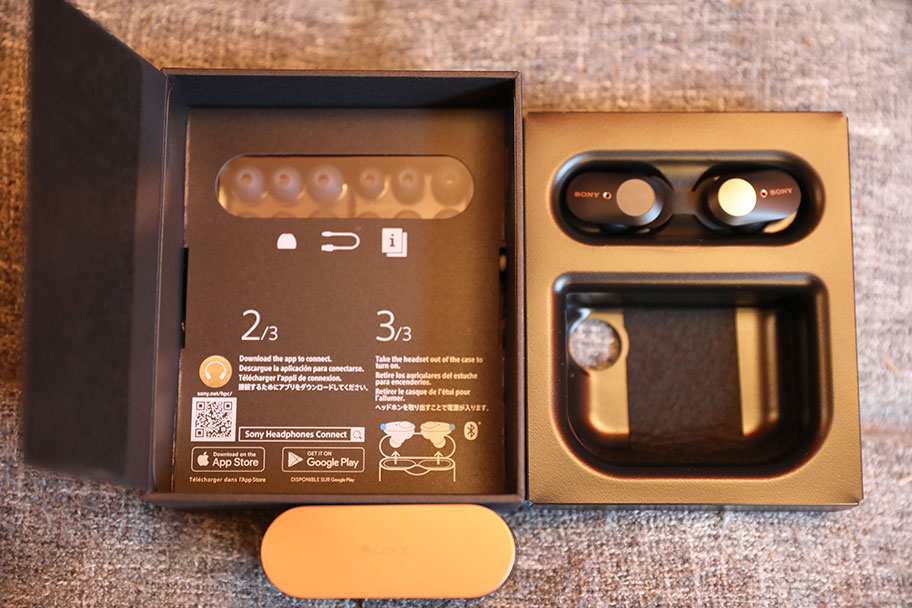
In theory, noise-canceling is brilliant. What could be better than completely removing the outside world from the equation, leaving you with nothing but the music? But there is a reason why very few audio-focused IEMs offer noise-canceling. As good as it is, it can often alter the sound in subtle but infuriating ways.
Noise-canceling works by capturing the sound of the world around you through external microphones on the IEMs, then applying a process known as phase cancellation. This essentially eliminates the sounding question, subtracting it from the sound you hear. But because of the nature of this process, it can often cause the audio to sound a little muffled. That’s why we almost never recommend going for noise-canceling if you’re buying a pair of IEMs specifically for great sound. You will never— and we do mean never— find it in a pair of high-end IEMs. Of course, if you do want to enjoy good noise-canceling, there are several options and they don’t always compromise the audio quality. The best ones right now are the Bose QuietComfort Earbuds II.
If you’re deciding whether to buy a pair of IEMs or a pair of full size, over-ear headphones, the one thing you should absolutely not consider is sound quality. Both IEMs and full-size headphones can sound fantastic at any price range, so sound quality should (we can’t believe we’re saying this) be a secondary consideration.
The primary consideration should be comfort and convenience. IEMs are unquestionably more convenient—they weigh less and take up less space. However, they can be uncomfortable for some people, and can often consist of multiple small parts which can easily be lost. You also have to worry about tangled cables, poorly fitting tips, and more careful source selection. Headphones may be bulkier and heavier, but in some ways are easier to manage. Even with traditional wired headphones, you usually only need to worry about two elements—the headphones and the cable. It’s also frequently easier to find high-end headphones that also have wireless Bluetooth functionality, which may be worth looking at if you intend to go wireless. Ultimately, as with so much in audio world, much of this comes down to personal preference.
Back To Our In-Ear Monitor (IEM) Picks